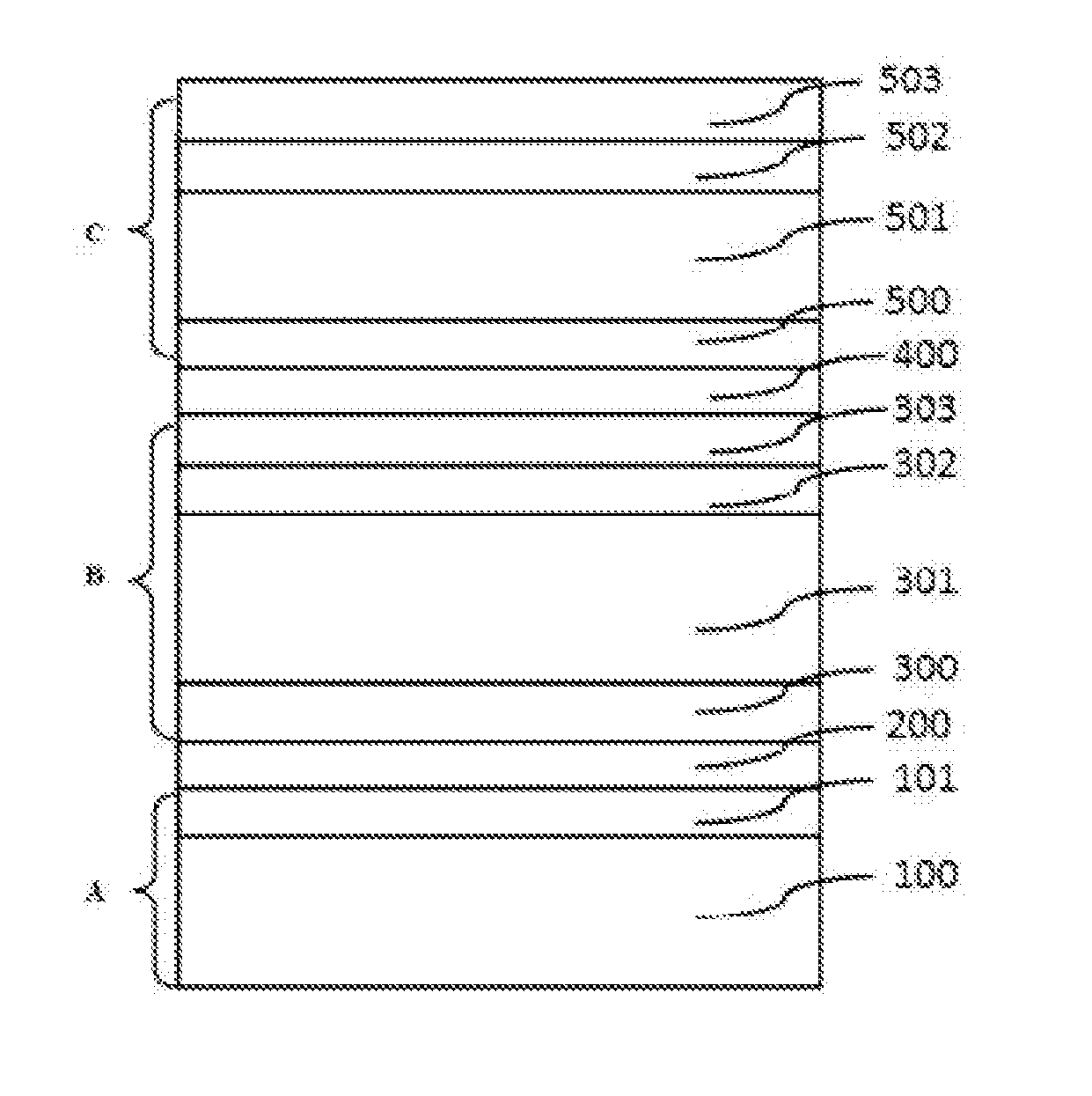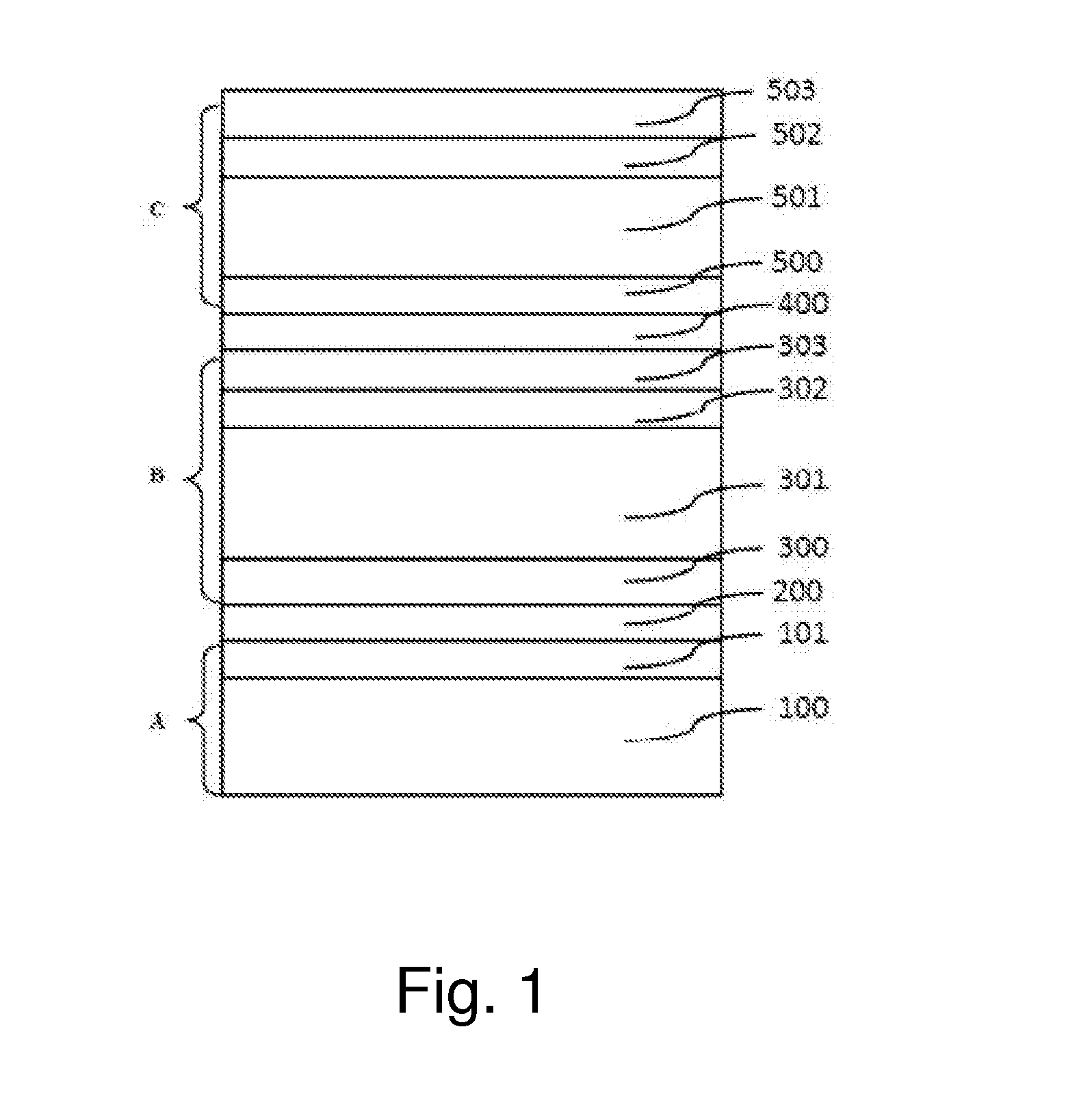High-concentration multi-junction solar cell and method for fabricating same
a solar cell, multi-junction technology, applied in the field of compound semiconductor solar cells, can solve the problems of affecting the cell fill factor, and reducing the conversion efficiency, so as to increase the photoelectric conversion efficiency of the cell, reduce the fill factor of the cell, and increase the series resistance
- Summary
- Abstract
- Description
- Claims
- Application Information
AI Technical Summary
Benefits of technology
Problems solved by technology
Method used
Image
Examples
embodiment one
[0038]As illustrated in FIG. 1, a high-concentration multi-junction solar cell comprises a Ge bottom cell A, an intermediate cell B, a top cell C and two tunneling junctions 200 and 400 connecting the cells.
[0039]More specifically, the figure shows: one P-type Ge substrate 100 and one n-type Ga0.5In0.5P window layer 101 deposited on the substrate, which form a Ge bottom cell A.
[0040]A series of highly doped P-type and n-type layers are deposited on the top of the Ge bottom cell A, forming a GaAs tunneling junction 200 and used for connecting the Ge bottom cell A to the intermediate cell B.
[0041]An intermediate cell back surface field layer 300 is deposited on the top of the formed GaAs tunneling junction 200 and used for reducing recombination loss. The layer is preferably formed by P-type AlGaAs.
[0042]An intermediate cell base area 301 and an intermediate cell emitter layer 302 are deposited on an intermediate cell back surface field layer 300. In the preferred embodiment, the inte...
embodiment two
[0046]The embodiment is a fabricating process of the high-concentration multi-junction solar cell in Embodiment One, comprising the process of the sub-cells A, B and C and each layer between the sub-cells. In the course of MOCVD epitaxial growth, by controlling and adjusting the flow ratio of n-type dopant source in the reaction source, the grading of the doping concentration of the emitter layer can be realized.
[0047]The specific fabrication process comprises the following steps:
[0048]The p-type doped Ge substrate 100 has a thickness of 150 micron and functions as the Ge bottom cell base area.
[0049]The P-type Ge substrate 100 is well cleaned and placed in a MOCVD reaction chamber; first the P-type Ge substrate 100 is baked for ten minutes at the temperature of 750° C. and then decreased to a temperature of 600° C. n-type Ga0.5In0.5P window layer 101 grows epitaxially to form the Ge bottom cell A.
[0050]The GaAs tunneling junction 200 connecting the bottom and intermediate cells grow...
PUM
 Login to View More
Login to View More Abstract
Description
Claims
Application Information
 Login to View More
Login to View More - R&D
- Intellectual Property
- Life Sciences
- Materials
- Tech Scout
- Unparalleled Data Quality
- Higher Quality Content
- 60% Fewer Hallucinations
Browse by: Latest US Patents, China's latest patents, Technical Efficacy Thesaurus, Application Domain, Technology Topic, Popular Technical Reports.
© 2025 PatSnap. All rights reserved.Legal|Privacy policy|Modern Slavery Act Transparency Statement|Sitemap|About US| Contact US: help@patsnap.com


